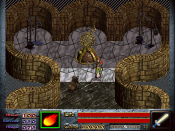Reply to Re: Coronavirus - how are you doing?
If you don't have an account, just leave the password field blank.
@Skurn (and the rest of us):
Yes, the media is having a field day.
And many scientific experts are paid for their expertise. However, I do not think that is reason enough to encourage anyone to ignore all scientific experts who provide information we do not want to hear.
Yes, the number of people dying as a percentage of the overall population is small. But the reason we are trying to get people to "lockdown", quarantine and maintain a social distance of 6 feet (about 2 meters) is that we don't want to overwhelm too many of our hospitals, like what is starting to happen in New York, New York, USA and what has already happened in Northern Italy, Atlanta Georgia, USA and Rome Italy.
As for the comparison to the 1918 Spanish Flu, it is certainly true that medical science has advanced since then. It is also true that most estimates place the global median R0 value for Spanish Flu somewhere around 1.80(*) (though it was thought to be higher in some countries). This, of course, is lower than the range of somewhere between 2.0 and 3.0 that we are seeing for COVID 19. That and the slow incubation period for COVID 19 and it's relatively rapid rate of mutation make it a somewhat unique threat.
And yes, the disease will have the greatest impact on those who are "at risk" based on some medical condition or simply have that "medical condition" known as advanced years. But it has crippled and killed people much younger and heathier by causing permanent & irreparable damage to their respiratory systems.
(*)Twenty-four studies reported 51 R values for the 1918 pandemic. The median R value for 1918 was 1.80. (See https://www.ncbi.nlm.nih.gov/ for more details.)
Yes, the media is having a field day.
And many scientific experts are paid for their expertise. However, I do not think that is reason enough to encourage anyone to ignore all scientific experts who provide information we do not want to hear.
Yes, the number of people dying as a percentage of the overall population is small. But the reason we are trying to get people to "lockdown", quarantine and maintain a social distance of 6 feet (about 2 meters) is that we don't want to overwhelm too many of our hospitals, like what is starting to happen in New York, New York, USA and what has already happened in Northern Italy, Atlanta Georgia, USA and Rome Italy.
As for the comparison to the 1918 Spanish Flu, it is certainly true that medical science has advanced since then. It is also true that most estimates place the global median R0 value for Spanish Flu somewhere around 1.80(*) (though it was thought to be higher in some countries). This, of course, is lower than the range of somewhere between 2.0 and 3.0 that we are seeing for COVID 19. That and the slow incubation period for COVID 19 and it's relatively rapid rate of mutation make it a somewhat unique threat.
And yes, the disease will have the greatest impact on those who are "at risk" based on some medical condition or simply have that "medical condition" known as advanced years. But it has crippled and killed people much younger and heathier by causing permanent & irreparable damage to their respiratory systems.
(*)Twenty-four studies reported 51 R values for the 1918 pandemic. The median R value for 1918 was 1.80. (See https://www.ncbi.nlm.nih.gov/ for more details.)











